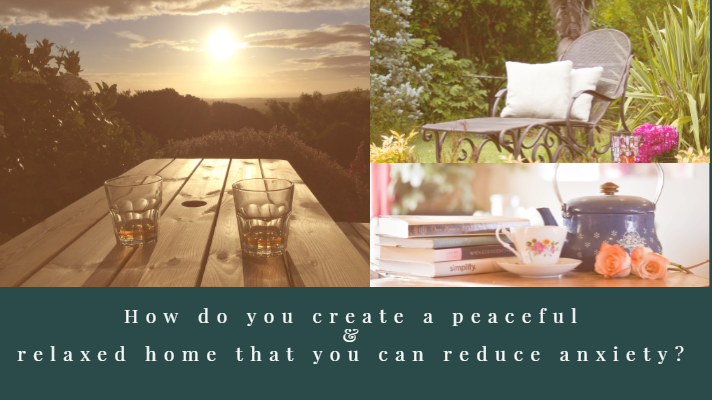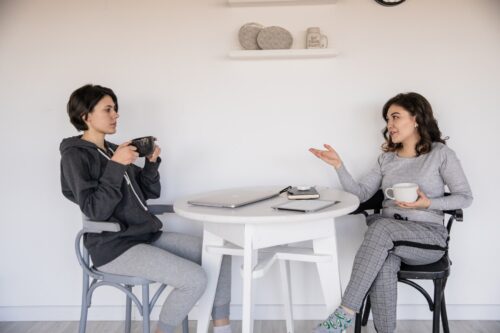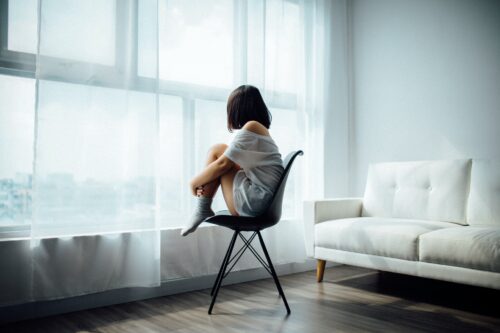A home is more than just a physical space; it is a sanctuary that has the power to influence our mental and emotional well-being. The environment we surround ourselves with can either contribute to or alleviate feelings of anxiety. Understanding the impact of the home environment on anxiety levels is crucial in designing a tranquil and stress-free home.
Research has shown that certain design elements can significantly affect our mood and overall mental health. For example, cluttered and disorganized spaces can create feelings of overwhelm and unease, while well-organized and clutter-free spaces promote a sense of calmness and relaxation. Additionally, the colors and materials used in our homes can have a profound impact on our emotional state.
The Principles of Designing a Tranquil and Stress-Free Home
When it comes to designing a tranquil and stress-free home, there are a few key principles to keep in mind. First and foremost, simplicity is key. Avoiding excessive decorations, furniture, and unnecessary items can help create a sense of spaciousness and serenity. Opting for a minimalist design approach allows for a more organized and clutter-free environment, which in turn promotes a calm and peaceful atmosphere.
Another important principle is to create a harmonious flow throughout the home. This can be achieved by considering the layout and arrangement of furniture, as well as the use of natural light and open spaces. By ensuring that each room feels connected and flows seamlessly into the next, you can create a sense of continuity and tranquility throughout your home.
Choosing Calming Colors and Materials for Your Home
The colors and materials we choose for our homes can have a significant impact on our mood and overall well-being. When designing a tranquil and stress-free home, it is important to opt for calming colors that promote relaxation. Soft, muted tones such as blues, greens, and neutrals are known to have a soothing effect on the mind and can help reduce feelings of anxiety.
In addition to color, the materials used in our homes can also contribute to a sense of tranquility. Natural materials such as wood, bamboo, and stone can create a connection to nature and evoke a feeling of serenity. Incorporating these materials into your home’s design can help create a calming and peaceful environment.
Creating a Clutter-Free and Organized Space
One of the most effective ways to reduce anxiety in the home is by creating a clutter-free and organized space. Clutter has been shown to increase stress levels and can make it difficult to relax and unwind. By decluttering your home and implementing effective organization systems, you can create a peaceful and serene environment.
Start by going through each room and getting rid of any items that are no longer needed or bring you joy. Donate or sell items that are still in good condition, and dispose of anything that is no longer usable. Once you have decluttered, it is important to establish effective organization systems to ensure that everything has a designated place. This will not only create a visually pleasing space but will also make it easier to find and access items when needed.
Incorporating Natural Elements for a Soothing Environment
Bringing the outdoors in can have a profound impact on our well-being and help create a soothing environment. Incorporating natural elements such as plants, natural light, and views of nature can help reduce anxiety and promote a sense of calmness.
Plants not only add beauty to a space but also purify the air and release oxygen, creating a healthier indoor environment. Additionally, natural light has been shown to improve mood and increase productivity. Maximize natural light in your home by utilizing curtains or blinds that allow for ample sunlight to enter your space. Lastly, if possible, create views of nature from within your home by strategically placing windows or incorporating indoor gardens.
Using Lighting and Sound to Promote Relaxation
Lighting and sound can play a crucial role in promoting relaxation and reducing anxiety in the home. Dim, warm lighting can create a cozy and calming atmosphere, while harsh, bright lighting can be stimulating and anxiety-inducing. Opt for soft, warm LED lights or install dimmer switches to adjust the lighting to your desired level of relaxation.
Sound can also have a profound impact on our mental state. Incorporating soothing sounds such as nature sounds, calming music, or white noise can help drown out external distractions and promote a sense of tranquility. Consider using sound machines, speakers, or even smartphone apps to create a soothing auditory experience in your home.
The Role of Aromatherapy in Reducing Anxiety
Aromatherapy is an ancient practice that utilizes the power of scent to promote relaxation and reduce anxiety. Certain essential oils have been shown to have calming properties and can help create a tranquil environment in the home.
Lavender, chamomile, and bergamot are known for their soothing and anxiety-reducing effects. Incorporate these essential oils into your home by using diffusers, scented candles, or even incorporating them into cleaning products. Experiment with different scents and find what works best for you in creating a calming and stress-free atmosphere.
Designing a Bedroom that Promotes Restful Sleep
A restful sleep is essential for maintaining overall mental well-being and reducing anxiety. Designing a bedroom that promotes quality sleep is therefore crucial in creating a tranquil and stress-free home.
Start by choosing a comfortable mattress and pillows that suit your needs and preferences. Opt for bedding made from natural materials such as cotton or bamboo, as they are breathable and promote better airflow. Consider using blackout curtains or blinds to minimize external light and create a dark, sleep-friendly environment. Lastly, keep electronic devices out of the bedroom to reduce distractions and promote a restful sleep.
Creating Designated Spaces for Relaxation and Self-Care
Incorporating designated spaces for relaxation and self-care is essential in creating a tranquil and stress-free home. These spaces provide a dedicated area for activities such as meditation, yoga, reading, or simply taking a break from the demands of everyday life.
Designate a specific room or area in your home where you can engage in activities that promote relaxation and self-care. Personalize the space with comfortable seating, soft lighting, and calming decor. This will serve as a constant reminder to prioritize self-care and create a designated space for recharging and rejuvenating.
Maintaining a Stress-Free Home: Tips for Ongoing Organization and Decluttering
Maintaining a stress-free home requires ongoing organization and decluttering. It is essential to establish routines and habits that support a clutter-free environment.
Make it a habit to declutter regularly, even if it’s just a few minutes each day. Set aside specific times to assess your belongings and determine what can be donated or discarded. Establish effective organization systems and make sure to put items back in their designated places after use. By incorporating these habits into your daily routine, you can maintain a stress-free and organized home.
Conclusion: Embracing the Power of a Tranquil Home in Reducing Anxiety
Designing a tranquil and stress-free home is not only about aesthetics but also about creating an environment that supports our mental and emotional well-being. By understanding the impact of the home environment on anxiety levels and implementing the principles discussed in this guide, you can create a space that promotes relaxation, reduces anxiety, and fosters a sense of tranquility.
Embrace the power of a tranquil home and prioritize your mental health by implementing these design principles and tips. Remember, it is not about achieving perfection, but rather creating a space that feels calm, peaceful, and conducive to your overall well-being. Your home should be a sanctuary that supports and nurtures your mental health, allowing you to thrive and find balance in an increasingly chaotic world.
Take the first step towards creating a tranquil home by decluttering one room today. Embrace simplicity and create a space that promotes relaxation and reduces anxiety. Your mental health will thank you.
Access Mental Health Awareness Books from Amazon: Mental Health Books












